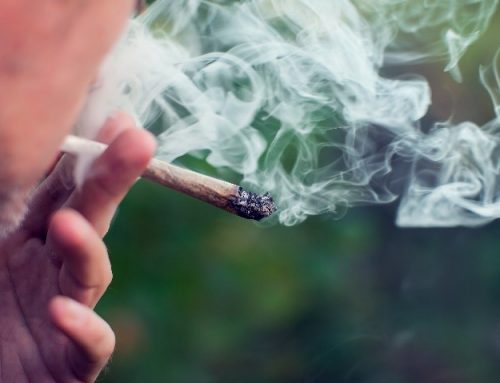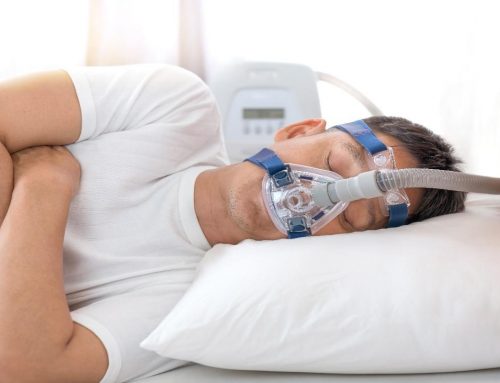Table of Contents
Sleep Apnea in Women
 Obstructive sleep apnea is a sleep-related breathing disorder that happens when your airway becomes obstructed during sleep – often because of collapsed throat muscles or your tongue flipping back onto the airway and obstructing airflow.
Obstructive sleep apnea is a sleep-related breathing disorder that happens when your airway becomes obstructed during sleep – often because of collapsed throat muscles or your tongue flipping back onto the airway and obstructing airflow.
Every time this happens, your brain subconsciously awakens you to open the airway so you can take a breath, which is an indication for your respiratory system to kick back into gear. You often do not remember awakening in the morning, but the cycle repeats through the night and prevents your mind and body from getting the rest required to function.
Do Women Get Sleep Apnea?
Most individuals imagine typical sleep apnea sufferers as middle-aged men with a heavy build and a roaring snore. Sleep apnea causes include age, gender, weight, and neck circumference. However, these parameters do not fully capture the entire population of impacted persons.
Earlier researches have shown a lopsided ratio of men to women diagnosed with obstructive sleep apnea (about 8 or 9 ratios of men to women). Nevertheless, we know from studies in the general population that the actual ratio is probably closer to 2 or 3 men for every woman with sleep apnea.
Why Are Women Less Diagnosed with Sleep Apnea as Compared to men
If women are half as likely to have sleep apnea as men but are diagnosed and treated for only an eighth of the time, it shows that women are greatly underdiagnosed. Why?
The hallmark signs of snoring witnessed apneas, weight, and falling asleep during the day might be less common in women with mild sleep apnea as compared to men with the same level of the condition, further making sleep apnea in thin women less obvious. While women do experience daytime sleepiness, it is likely that they have a different threshold for feeling sleepy or altogether complain differently about being sleepy than men.
A study has also documented sex differences in the upper airway, fat distribution, and respiratory stability in obstructive sleep apnea. Hormones are implicated in some gender-related differences, with differences between men and women in the prevalence of obstructive sleep apnea decreasing as age increases.
Women may often be misdiagnosed with conditions other than sleep apnea, like:
- Obesity
- Menopausal changes
- Insomnia
- Hypothyroidism
- Hypochondria
- Hypertension
- Fibromyalgia
- Fatigue from overwork
- Diabetes
- Depression
- Cardiac or pulmonary illnesses
- Anemia
Is Sleep Apnea Risky for Women?
 As with men, women with untreated sleep apnea can be at a higher risk of developing chronic conditions like high blood pressure, stroke, type 2 diabetes, metabolic syndrome, and depression.
As with men, women with untreated sleep apnea can be at a higher risk of developing chronic conditions like high blood pressure, stroke, type 2 diabetes, metabolic syndrome, and depression.
Growing evidence indicates that even mild sleep apnea should be treated, as it is connected to daytime impairment, difficulty concentrating and completing tasks, poor psychomotor performance, and a general reduced quality of life.
Common Sleep Apnea Symptoms in Women Include:
- Unrefreshing sleep
- Snoring
- Post-menopause
- Obesity
- Morning headaches
- Insomnia
- High blood pressure that is hard to control despite medication
- Regular awakenings for urination or from gasping
- Dry mouth upon awakening
- Depression
- Daytime fatigue or lack of energy despite getting an adequate amount of sleep (typically 7-8 hours)
- Breathing pauses (apneas) or choking sounds when sleeping
- Anxiety or moodiness
CPAP Is the Gold Standard Treatment for Women with Sleep
In women with moderate or severe obstructive sleep apnea, 3 months of sleep apnea machine therapy enhanced quality of life, mood state, anxiety and depressive symptoms, and daytime sleepiness compared with conservative treatment.
A tailored sleep apnea treatment that considers physiological and comfort differences that women experience benefits women with sleep apnea.
Call us if you think you have sleep apnea. We will help you plan the treatment so you can get the sleep you need.




 Shop
Shop



